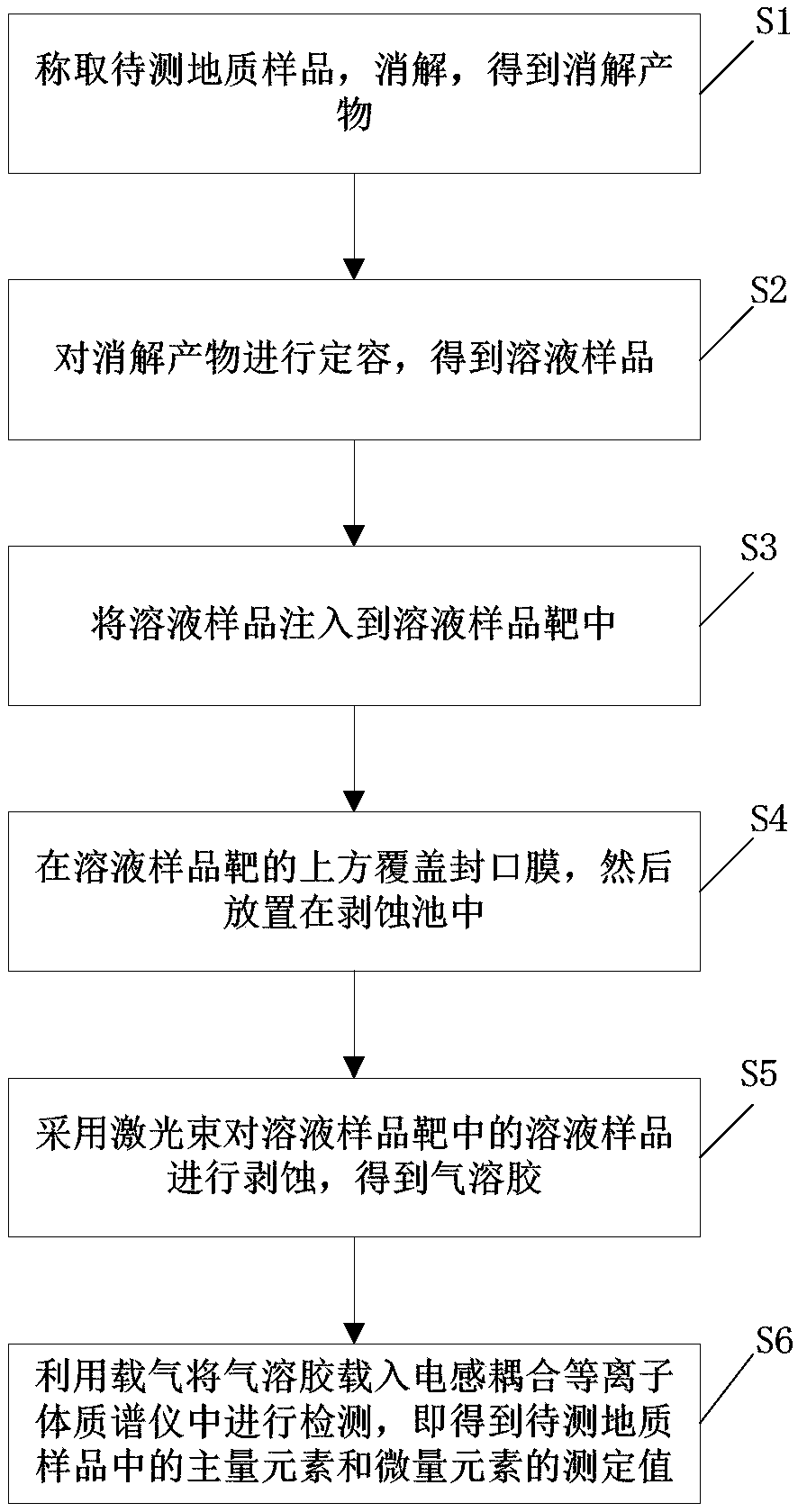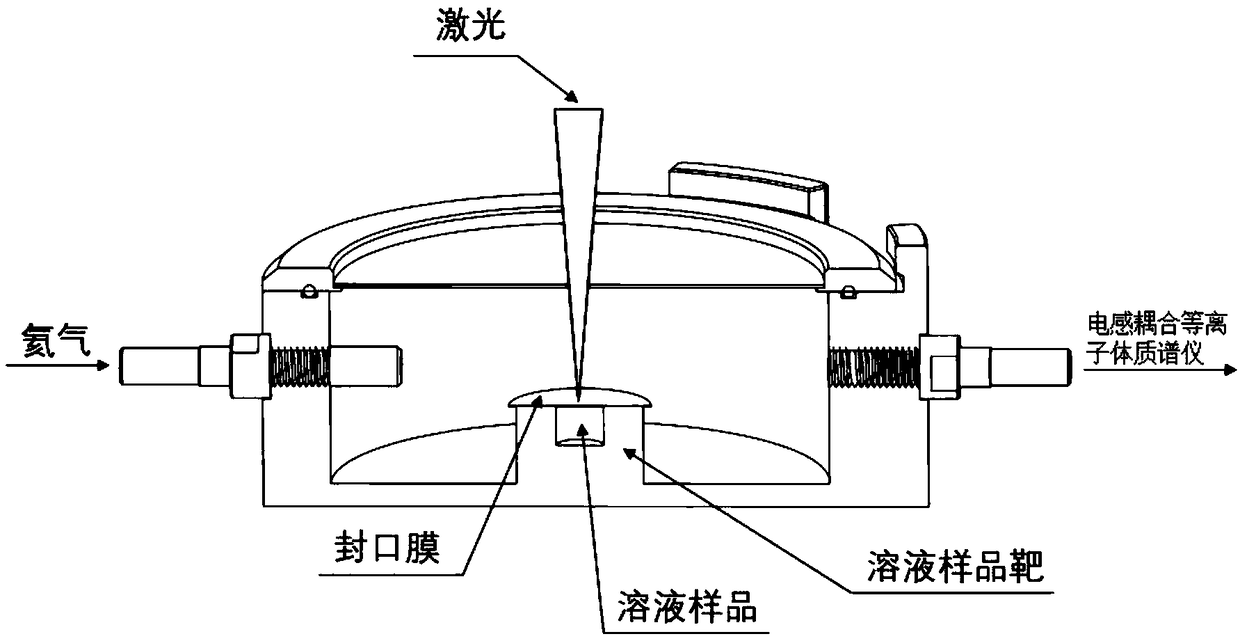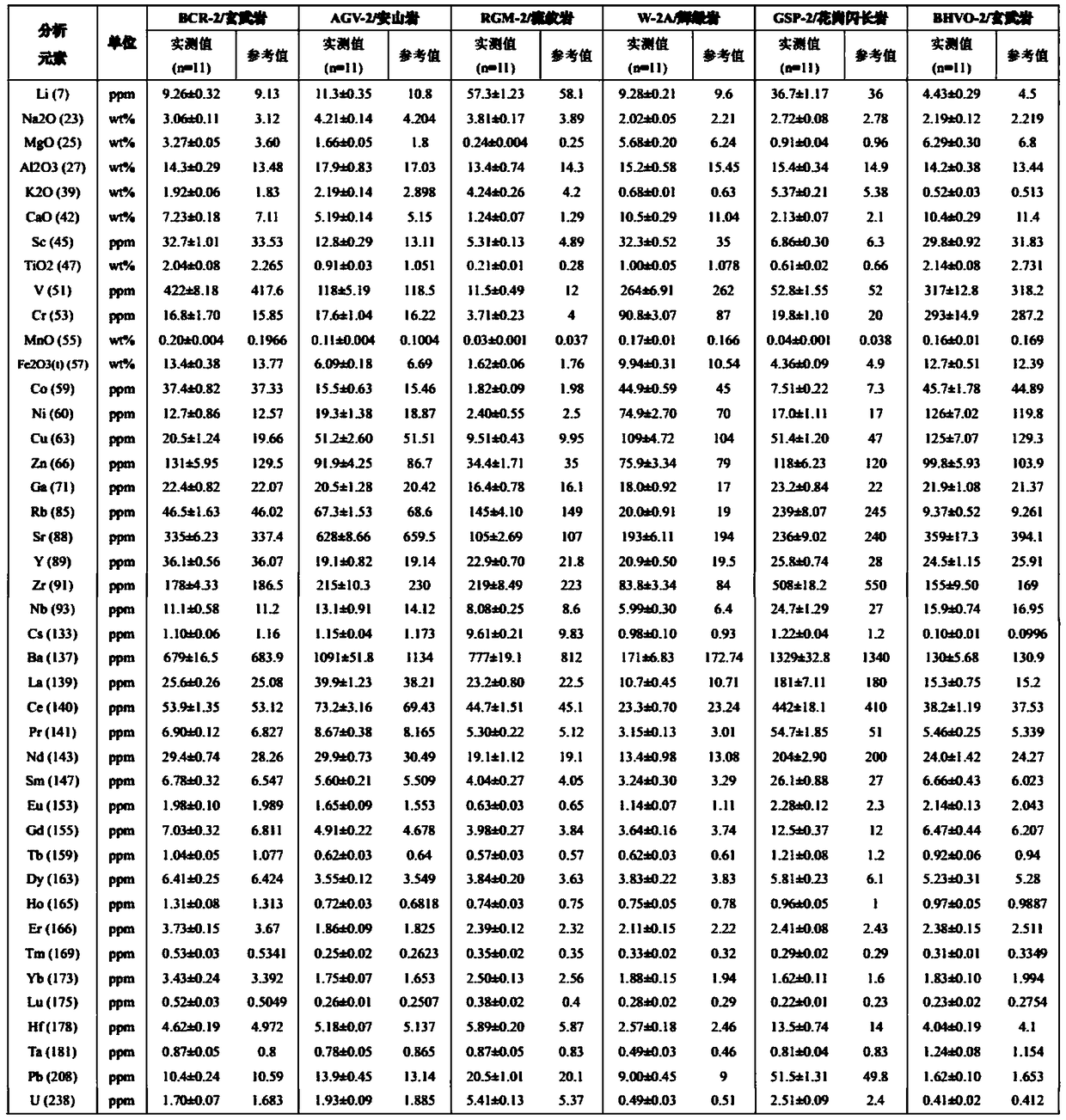Laser-based solution ablation injection analysis method
An analytical method and technology for solution samples, applied in the field of chemical analysis, can solve the problems of plasma mass spectrometry, non-mass spectrometry, interference, etc., and achieve the effects of reducing polyatomic ion interference, less consumption, and weakening matrix effects
- Summary
- Abstract
- Description
- Claims
- Application Information
AI Technical Summary
Problems solved by technology
Method used
Image
Examples
Embodiment 1
[0049]Weigh 50 ± 0.2 mg of basalt (BCR-2) powder sample, and use the ammonium bifluoride method for digestion to obtain the digestion product. Add 1 mL of 1 μg mL to the digestion product -1 Indium (In) single standard solution;
[0050] Digest the product with 2% (v / v) HNO 3 Set the volume to 5.00g to obtain a solution sample;
[0051] Open a hole with a diameter of φ2mm in the solution sample target, and then pipette about 15 μL of the solution sample into the hole until the liquid level is flush with the notch of the hole;
[0052] use The "M" sealing film seals the hole of the built-in solution sample and puts it into the denudation pool;
[0053] Focus under the microscope until the texture of the surface of the parafilm is clear, then use the laser beam to pre-ablate the parafilm until the liquid surface of the solution sample is exposed, and then use the laser beam to ablate the solution sample in the solution sample target to obtain an aerosol. When ablation of the...
Embodiment 2
[0055] Weigh 50±0.2mg of andesite (AGV-2) powder sample, and digest it with ammonium bifluoride method to obtain the digestion product, add 1mL of -1 Indium (In) single standard solution;
[0056] Digest the product with 2% (v / v) HNO 3 Set the volume to 4.00g to obtain a solution sample;
[0057] Open a hole with a diameter of φ2mm in the solution sample target, and then pipette about 15 μL of the solution sample into the hole until the liquid level is flush with the notch of the hole;
[0058] use The "M" sealing film seals the hole of the built-in solution sample and puts it into the denudation pool;
[0059] Focus under the microscope until the texture of the surface of the parafilm is clear, then use the laser beam to pre-ablate the parafilm until the liquid surface of the solution sample is exposed, and then use the laser beam to ablate the solution sample in the solution sample target to obtain an aerosol. When ablation of the solution sample The beam spot diameter ...
Embodiment 3
[0061] Weigh 50 ± 0.2 mg of rhyolite (RGM-2) powder sample, and use the ammonium bifluoride method for digestion to obtain the digestion product, add 1 mL of 1 μg mL to the digestion product -1 Indium (In) single standard solution;
[0062] Digest the product with 2% (v / v) HNO 3 Dilute to 1.00g to obtain a solution sample;
[0063] Open a hole with a diameter of φ2mm in the solution sample target, and then pipette about 15 μL of the solution sample into the hole until the liquid level is flush with the notch of the hole;
[0064] use The "M" sealing film seals the hole of the built-in solution sample and puts it into the denudation pool;
[0065] Focus under the microscope until the texture of the surface of the parafilm is clear, then use the laser beam to pre-ablate the parafilm until the liquid surface of the solution sample is exposed, and then use the laser beam to ablate the solution sample in the solution sample target to obtain an aerosol. When ablation of the solu...
PUM
| Property | Measurement | Unit |
|---|---|---|
| frequency | aaaaa | aaaaa |
Abstract
Description
Claims
Application Information
 Login to View More
Login to View More - R&D
- Intellectual Property
- Life Sciences
- Materials
- Tech Scout
- Unparalleled Data Quality
- Higher Quality Content
- 60% Fewer Hallucinations
Browse by: Latest US Patents, China's latest patents, Technical Efficacy Thesaurus, Application Domain, Technology Topic, Popular Technical Reports.
© 2025 PatSnap. All rights reserved.Legal|Privacy policy|Modern Slavery Act Transparency Statement|Sitemap|About US| Contact US: help@patsnap.com



